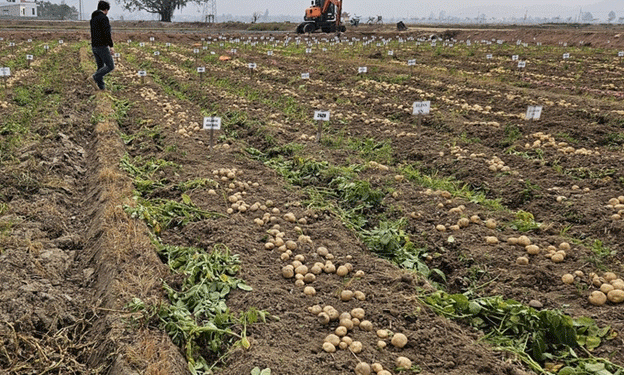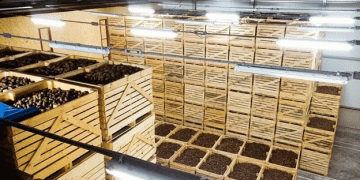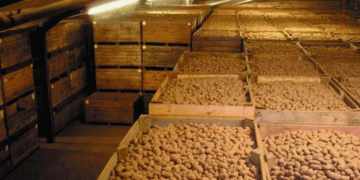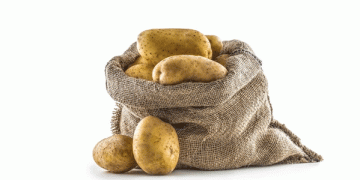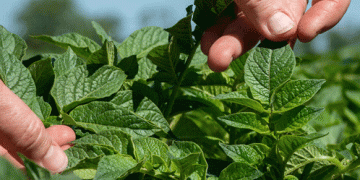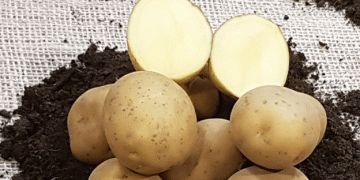The introduction of white-fleshed potato varieties offers a promising avenue for enhancing agricultural productivity in Northern Vietnam’s winter season. These varieties, tailored for industrial processing, present both challenges and opportunities for local farmers.
In 2007, a serendipitous encounter between Dr. Nguyễn Xuân Trường, Director of the Institute of Agricultural Biology at the Vietnam Academy of Agriculture, and Dr. Lee Un Sang, an advisor to Orion Corporation (South Korea), led to the introduction of the American white-fleshed potato variety ‘Atlantic’ into Vietnam. This variety, characterized by high dry matter content and low sugar levels, is ideal for industrial processing as it resists discoloration and burning during frying. Initial trials in Yên Phong district, Bắc Ninh province, yielded promising results, prompting further collaboration between Vietnamese researchers and Korean partners.
The Institute of Agricultural Biology, leveraging its expertise in potato tissue culture and aeroponic cultivation, played a pivotal role in producing disease-free seed potatoes. This capability allowed for large-scale multiplication and distribution to farmers, reducing reliance on expensive imports and ensuring a steady supply of quality seed potatoes. By 2008, the ‘Atlantic’ variety was cultivated on 5 hectares in Tiên Lãng district, Hải Phòng city, gradually expanding to 30 hectares over subsequent years.
Currently, the Institute supplies approximately 1,200 tons of seed potatoes annually, supporting nearly 1,000 hectares of potato cultivation across 14 northern provinces, yielding between 13,000 to 15,000 tons of commercial potatoes. Notably, Tiên Lãng consistently achieves the highest yields, reaching up to 20 tons per hectare.
The adoption of mechanization has revolutionized potato farming in the region. Approximately 90% of the production process, from planting to harvesting, is now mechanized, significantly reducing labor requirements. Previously, cultivating one sào (360 square meters) required 10-12 laborers; now, it requires only about half a laborer. Major processing companies like Pepsi and Orion have established dedicated cultivation zones, with Pepsi focusing on the southern regions and Orion on the northern provinces.
However, transitioning from traditional yellow-fleshed potatoes to white-fleshed varieties like ‘Atlantic’ poses challenges. These varieties are less tolerant of suboptimal conditions and require meticulous attention to factors such as soil preparation, moisture management, and planting schedules. For instance, planting on wet soils without proper preparation can lead to defects like green, scabby, or cracked tubers. Farmers need to adapt to these specific requirements to achieve successful harvests.
The suitability of land and timing are crucial for successful cultivation. While Northern Vietnam has vast areas potentially suitable for winter potato cultivation, aligning planting schedules with climatic conditions is challenging. In recent years, winters have started later and ended earlier, compressing the optimal planting window. Additionally, traditional practices, such as early field flooding for spring rice cultivation in provinces like Bắc Giang and Bắc Ninh, can interfere with potato harvesting, adversely affecting yields.
Despite these challenges, innovative farmers have achieved remarkable success. In Yên Phong district, several households have scaled up potato cultivation, with some, like the couple Nguyễn Ngọc Giang, managing up to 70 hectares. Their success stems from continuous learning, experimentation, and adaptation to best practices, even if it means facing initial failures to gain valuable experience.
The introduction and cultivation of white-fleshed potato varieties present significant opportunities for Northern Vietnam’s agriculture. With appropriate technological support, farmer education, and infrastructure development, these varieties can enhance productivity and meet the growing demands of the processing industry. Collaborative efforts among researchers, farmers, and industry stakeholders are essential to fully realize the potential of these potatoes in the region’s winter cropping systems.
